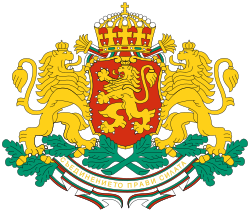
Back Banat bolqarları Azerbaijani Банатски българи Bulgarian Búlgars del Banat Catalan Banater Bulgaren German Βούλγαροι του Βανάτου Greek Búlgaros del Banato Spanish Baanaatin bulgarialaiset Finnish Bulgares du Banat French Banatski Bugari Croatian Bulgari del Banato Italian
 Bulgarian-inhabited places in the Banat Bulgarian population
City or town | |
| Total population | |
|---|---|
| Romania: 6,468 (2002)[1] 12,000 (est.)[2] Serbia: fewer than 1,658 (2002)[3] 3,000 (est.)[2] | |
| Regions with significant populations | |
| Banat (Romania, Serbia), Bulgaria, to a lesser extent Hungary, United States | |
| Languages | |
| Banat Bulgarian, common Bulgarian also Romanian (in Romania), Serbian (in Serbia) | |
| Religion | |
| Predominantly Latin Catholicism | |
| Related ethnic groups | |
| Bulgarians |
| Part of a series on |
| Bulgarians Българи |
|---|
 |
| Culture |
| By country |
| Subgroups |
| Religion |
| Language |
| Other |
The Banat Bulgarians (Banat Bulgarian: Palćene or Banátsći balgare; common Bulgarian: Банатски българи, romanized: Banatski bălgari; Romanian: Bulgari bănățeni; Serbian: Банатски Бугари / Banatski Bugari), also known as Bulgarian Roman Catholics, Bulgarian Latin Catholics and Bulgarians Paulicians or simply as Paulicians,[4] are a distinct Bulgarian minority group which since the Chiprovtsi Uprising in the late 17th century began to settle in the region of the Banat, which was then ruled by the Habsburgs and after World War I was divided between Romania, Serbia, and Hungary. Unlike most other Bulgarians, they are Roman Catholic by confession and stem from groups of Paulicians (who eventually adopted Catholicism) and Roman Catholics from modern northern and northwestern Bulgaria.[5]
Banat Bulgarians speak a distinctive codified form of the Eastern Bulgarian vernacular with much lexical influence from the other languages of the Banat. Although strongly acculturated to the Pannonian region (remote from Bulgaria's mainland), they have preserved their Bulgarian identity;[6] however, they consider themselves Bulgarians among other ethnic groups but self-identify as Paulicians when compared to ethnic Bulgarians.[4][5]
- ^ "Structura Etno-demografică a României" (in Romanian). Centrul de Resurse pentru Diversitate Etnoculturală. 2008-07-24.
- ^ a b Иванова, Говорът и книжовноезиковата практика на българите-католици от сръбски Банат.
- ^ Nomachi, Motoki (2016). "The Rise, Fall, and Revival of the Banat Bulgarian Literary Language: Sociolinguistic History from the Perspective of Trans-Border Interactions". The Palgrave Handbook of Slavic Languages, Identities and Borders. Palgrave Macmillan. pp. 394–428. Retrieved 1 March 2019.
- ^ a b Vučković, Marija (2008). "Болгары — это мы или другие? (Само)идентификация павликан из Баната" [Bulgarians – We or the Others? (Self)identification of Paulicians from Banat]. Etnolingwistyka. Problemy Języka i Kultury. 20: 333–348. Retrieved 28 February 2019.
- ^ a b Vučković, Marija (2008). "Savremena istraživanja malih etničkih zajednica" [Contemporary studies of small ethnic communities]. XXI Vek (in Serbo-Croatian). 3: 2–8. Retrieved 1 March 2019.
- ^ Zatykó Vivien (1994). "Magyar bolgárok? Etnikus identitás és akkulturáció a bánáti bolgárok körében". REGIO folyóirat (in Hungarian). Archived from the original on September 26, 2007. Retrieved 2007-04-02.
© MMXXIII Rich X Search. We shall prevail. All rights reserved. Rich X Search